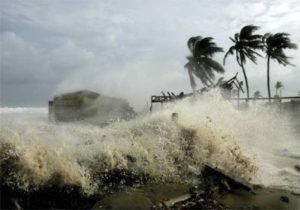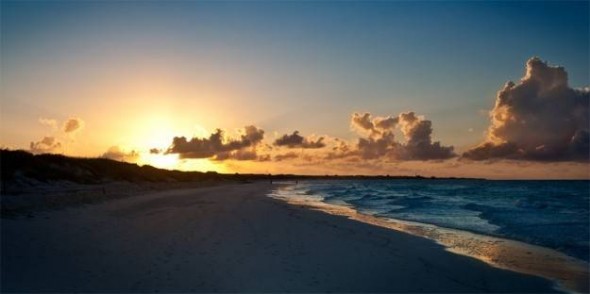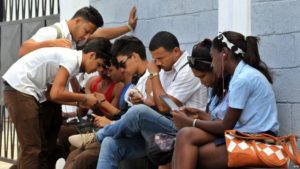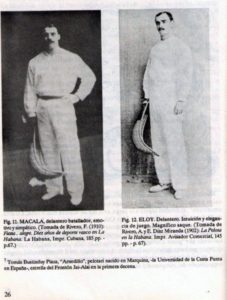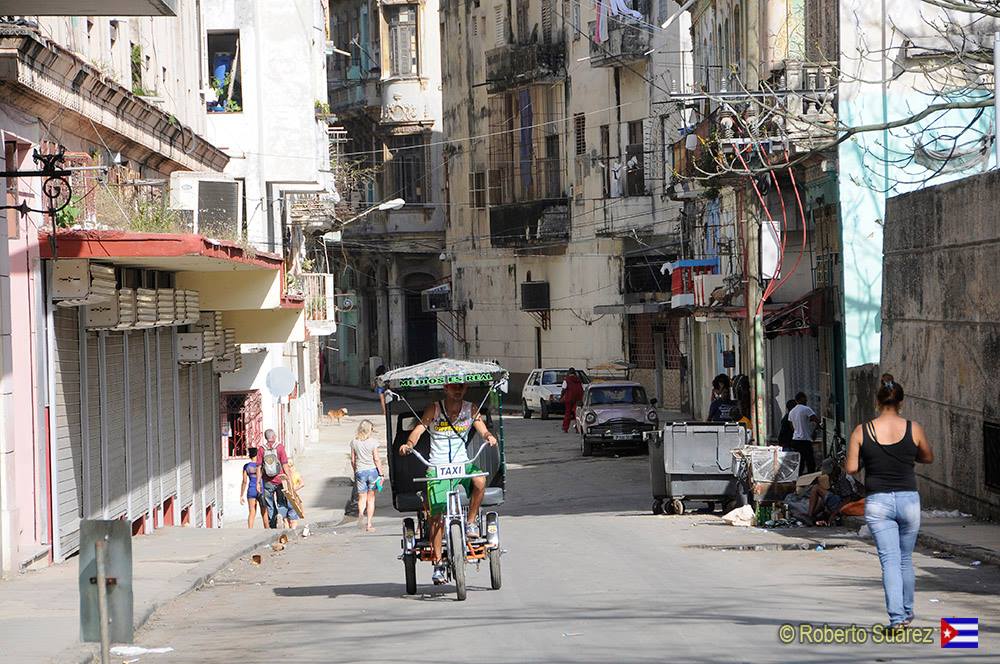FAMOUS CYCLONES THAT HAVE HIT CUBA.
Cuba due to its geographical location, for centuries has been subjected to the so-called hurricanes or cyclones. But some have been registered in the history of our country with one greater negative impact than others and this is the reason for our today’s article.
Known as “The 1926 Terrible” by its destructive power was that passed by Cuba on October 26 of that fateful year for a defenseless population before this kind of atmospheric phenomenon, was one of the most destructive meteors that has hit the island. By the swiftness of its travel, cyclonic reports it now day 17 about a hundred miles from Nicaragua and already for the 18 day, in the afternoon, it had become a powerful hurricane whose eye was needed in its possible path, it would span the province of Havana.
So it was, according to the historical memories the vortex of hurricane, after crossing Pine Island and devastate Gerona, penetrated by the Surgidero de Batabanó, by Melena del Sur and went on with destructive March through Quivicán, Managua, Santa María de el Rosario… until finally went out to sea by the North Coast, near Bacuranao. It had maximum winds, it is said, 250 kilometers per hour. The blasts destroyed the anemometers, and Bethlehem Observatory registered a high of 103 miles per hour (about 165,7 kilometers per hour) until the counters remain unused.
Punished to Havana for ten hours and its effects were felt in Pinar del Rio, Matanzas and Las Villas. It caused damage to 5,000 properties, let 300 sunken ships and 120 000 trees in the ground. A hundred tons patana was found about ten kilometers from the coast. There is an image that has been as the representation of this meteor. The wooden bar that went through the trunk of a Royal Palm. Inspired by her, Sindo Garay composed the hurricane and the Palm. 26 cyclone resulted in 650 deaths and losses by more than one hundred million pesos.
But it is only part of this story, the greatest natural tragedy which is recorded in our history took place in Santa Cruz del Sur, Camagüey province, in November 1932. Day 9 a hurricane penetrated by the southern coast of the province and to sweep the waters of the sea, with its right wing winds pushed them over this coastal town and caused the death of more than 3 000 people and injuries to many others. Only a building was left standing in the town.
The inhabitants of the port of Jucaro, located to the left of the path of the hurricane, referred once they saw how the sea retreated several meters from the coast to return with force on it and swallowed to Santa Cruz. Jucaro stronger winds were ground out. Shocking testimony of that sinister is the photo that is on a huge pyre, burning the bodies of more than half of the population of Santa Cruz del Sur.
Hurricanes in a loop.
Some hurricanes that have hit Cuba have had a curious history. From October of 1910, which penetrated by the westernmost portion of the province of Pinar del Rio, described as on the sea, but still glued to the coast, a perfect loop before heading to Florida.
But the unique cyclone that completed a loop on the island territory was Flora, in October 1963. Those who do not live of 1944 or 1926, cyclones have in Flora the saddest in which references to natural disaster is concerned. At that time we were prisoner of the Castro Government in the notorious prison island of pines and I remember that all the prisoners despite its status policies outside the regime of the Castro brothers donated part of their own and few belongings to help the population of the island, thing that surely the Government did as his own.
This cyclone caused havoc in the agriculture, livestock, housing, highways and roads and infrastructure in general. It caused a huge number of victims. Some 1 126 people died drowned. Before entering Cuba, Flora had left 4 000 fatal victims in Haiti.
Cyclone Flora entered the country to the East of Guantanamo Bay and with Northwest path crossed about Yateras, the city of Holguin and Mayari. He then sought the Southeast and made a loop of Jiguaní for heading West out of Campechuela the Gulf of Guacanayabo and penetrate again on the island in the vicinity of Santa Cruz del Sur, climb, reaching the city of Camagüey, turn to the Southeast, passing near Manzanillo and Bayamo and already heading north, again touching the city of Holguín and exit by Gibara.
Since then several more have hit the coast and Cuban populations with catastrophic consequences, but in the most famous records you will always remember these previous as the most terrible who have attacked our island.
Agencies/Ciro Bianchi/Internet Photos/Arnoldo Varona/Excerpts.
THE CUBAN HISTORY, HOLLYWOOD.
CICLONES FAMOSOS QUE HAN AZOTADO A CUBA.
Cuba por su situación geográfica, durante siglos ha sido sometida a los llamados huracanes o ciclones. Pero algunos se han inscripto en la historia de nuestro país con un mayor impacto negativo que otros y esta es la razón de nuestro artículo de hoy.
El llamado “El terrible del 1926” por su poder destructor fue el que pasó por Cuba el 26 de octubre de ese fatídico año para una población indefensa ante esta clase de fenómeno atmosférico, fue uno de los meteoros más destructivos que ha azotado la Isla. Por la presteza de su recorrido, los informes ciclónicos lo fijaban el dia 17 a unas cien millas de Nicaragua y ya para el dia 18, por la tarde, se había convertido en un poderoso huracán cuyo ojo, se precisaba en su posible trayectoria, que atravesaría la provincia de La Habana.
Así fue, según los recuerdos históricos el vórtice del huracán, después de cruzar Isla de Pinos y devastar Gerona, penetró por el Surgidero de Batabanó, pasó por Melena del Sur y prosiguió con marcha destructiva por Quivicán, Managua, Santa María del Rosario… hasta que finalmente salió al mar por la costa norte, cerca de Bacuranao. Tuvo vientos máximos, se dice, de 250 kilómetros por hora. Las ráfagas destruyeron los anemómetros, y en el Observatorio de Belén se registró una máxima de 103 millas por hora (unos 165,7 kilómetros por hora) antes de que los contadores quedaran inutilizados.
Castigó a La Habana durante diez horas y sus efectos se hicieron sentir en Pinar del Río, Matanzas y Las Villas. Ocasionó daños en 5.000 inmuebles, dejó 300 embarcaciones hundidas y 120 000 árboles en el suelo. Una patana de cien toneladas fue encontrada a unos diez kilómetros de la costa. Hay una imagen que ha quedado como la representación de este meteoro. El listón de madera que atravesó el tronco de una palma real. Inspirado en ella, Sindo Garay compuso El huracán y la palma. El ciclón del 26 dejó un saldo de 650 muertos y pérdidas por más de cien millones de pesos.
Pero es solo parte de esta historia, la mayor tragedia natural que se registra en nuestra historia ocurrió en Santa Cruz del Sur, provincia de Camagüey, en noviembre de 1932. El día 9 un huracán penetró por la costa meridional de la provincia y al barrer con los vientos de su ala derecha las aguas del mar, las empujó sobre ese poblado costero y provocó la muerte de más de 3 000 personas y lesiones a otras tantas. Solo una edificación quedó en pie en la localidad.
Los habitantes del puerto de Júcaro, situado a la izquierda de la trayectoria del huracán, refirieron después que vieron cómo el mar se retiraba varios metros de la costa para volver con fuerza sobre ella y tragarse a Santa Cruz. En Júcaro los vientos más intensos fueron de la tierra hacia fuera. Testimonio impactante de ese siniestro es la foto en la que se ve arder, en una pira gigantesca, los cadáveres de más de la mitad de la población de Santa Cruz del Sur.
Huracanes en forma de lazo.
Algunos huracanes que han azotado a Cuba han tenido una trayectoria muy curiosa. El de octubre de 1910, que penetró por la porción más occidental de la provincia de Pinar del Río, describió ya sobre el mar, pero todavía pegado a la costa, un lazo perfecto antes de seguir rumbo a la Florida.
Pero el único ciclón que completó un lazo sobre el territorio insular fue Flora, en octubre de 1963. Los que no vivimos los ciclones de 1944 ni de 1926, tenemos en Flora la más triste de las referencias en lo que a desastre natural se refiere. En aquel entonces nos encontrábamos prisionero del gobierno castrista en la famosa prisión de Isla de Pinos y recuerdo que todos los presos a pesar de su condición políticas ajenas al régimen de los hermanos Castro donaron parte de sus propias y escasas pertenencias para ayudar a la población de la isla, cosa que seguramente el gobierno hizo como suyas.
Este ciclón ocasionó destrozos en la agricultura, la ganadería, la vivienda, carreteras y caminos vecinales y la infraestructura en general. Provocó un número enorme de damnificados. Unas 1 126 personas murieron ahogadas. Antes de entrar en Cuba, el Flora había dejado en Haití 4 000 víctimas fatales.
El ciclón Flora entró al país por el este de la bahía de Guantánamo y con trayectoria noroeste cruzó sobre Yateras, Mayarí y la ciudad de Holguín. Buscó entonces el sudeste e hizo un lazo sobre Jiguaní para con rumbo oeste salir por Campechuela al golfo de Guacanayabo y penetrar otra vez en la Isla por las inmediaciones de Santa Cruz del Sur, subir, llegar a la ciudad de Camagüey, girar al sudeste, pasar cerca de Manzanillo y Bayamo y, ya con rumbo norte, rozar de nuevo la ciudad de Holguín y salir por Gibara.
Desde entonces varios más han azotado a las costas y poblaciones cubanas con consecuencias catastróficas, pero en los records de los más famosos siempre se recordarán estos anteriores como los más terribles que hayan atacado a nuestra isla.
Agencias/Ciro Bianchi/Internet Photos/Arnoldo Varona/Excerpts.
THE CUBAN HISTORY, HOLLYWOOD.




